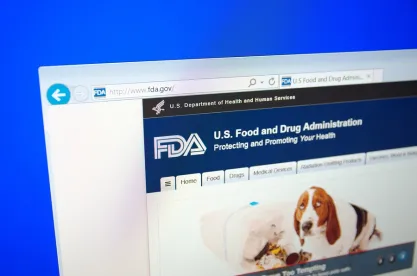On September 6, 2017, FDA finalized a guidance document entitled “Design Considerations and Pre-Market Submission Recommendations for Interoperable Medical Devices” (“Final Guidance”). In the Final Guidance, the agency outlines design considerations for manufacturers when developing interoperable medical devices, as well as recommendations about information to include in premarket submissions and device labeling. Interoperability of devices can encourage the availability and sharing of information across systems, even when products from different manufacturers are used. A draft of this guidance was issued on January 26, 2016.
The Final Guidance defines “interoperable medical devices” as medical devices “that have the ability to exchange and use information through an electronic interface with another medical/non-medical product, system, or device.” These functions can consist of a one-way data transmission to another device or product, or more complex interactions in which command and control is exercised over another device. An “electronic interface” is defined as the medium by which systems communicate with each other, and includes both the type of connection and the information content.
According to the Final Guidance, the agency considers the management of risks associated with an electronic interface incorporated into a medical device to be part of a comprehensive quality system under 21 C.F.R. Part 820. Manufacturers of interoperable medical devices should perform a risk analysis and conduct appropriate testing addressing the risks associated with interoperability, the anticipated users, reasonably foreseeable misuse, and reasonably foreseeable combinations of events that can result in a hazardous situation. In particular, the Final Guidance identifies the following considerations that manufacturers should take into account and “appropriately tailor[]” to the device’s interface technology, intended use, and use environments:
-
Purpose of the electronic interface, including the types of data exchanges taking place;
-
Anticipated users for each of the electronic interfaces;
-
Ways to mitigate risks identified in a risk analysis, including risks from others connecting to the electronic interface;
-
Verification and validation to ensure that devices with electronic interfaces work correctly prior to delivery, during the integration process, continue to work while in use, and through maintenance and release of software updates;
-
Labeling that users will need to connect predictably and safely to the interface; and
-
Use of consensus standards related to medical device interoperability.
The Final Guidance also provides recommendations for interoperable medical devices requiring a premarket submission that covers either one device or an entire interoperable system, although FDA acknowledges that a premarket submission will not be required for all such devices. These recommendations address the device description, risk analysis, verification and validation, and labeling for interoperable devices.
The Final Guidance states that “FDA recognizes and anticipates that the agency and industry may need up to 60 days to perform activities to operationalize the policies within the guidance.” As a result, if new information described in this guidance relating to device interoperability is not included in a premarket submission received by FDA before or up to 60 days after its publication on September 6, 2017, “CDRH staff does not generally intend to request such information during the review of the submission.” Nonetheless, if any such information is submitted during the 60-day period, CDRH will review it.
In addition to the Final Guidance, FDA published a blog post by Bakul Patel, Associate Director for Digital Health in FDA’s Center for Devices and Radiological Health, addressing the FDA’s goals in issuing the guidance.




 />i
/>i
